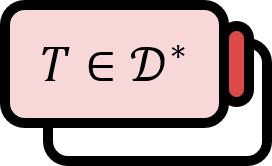The Dirac Delta Function Rigorously Defined through Distributions
Definition1
Let’s define the functional of the space of test functions $\mathcal{D}(\mathbb{R}^{n})$ as follows and call it the Dirac delta function.
$$ \delta_{a}(\phi):=\phi (a) $$
Then, the Dirac delta function becomes a distribution. It is briefly represented as follows if $a=0$.
$$ \delta=\delta_{0} $$
Explanation
The Dirac delta function, which was not strictly defined due to having divergent values and was roughly termed as a function, is rigorously defined by the above definition.
$$ \delta_{a} (\phi) = \int \delta (x-a)\phi (x)dx=\phi (a) $$
However, since it cannot be defined as a locally integrable function, it is not a regular distribution. To avoid confusion with the conventional Dirac delta function, the delta function as a distribution will be referred to as the delta distribution.
Proof
Part 1. Linearity
For $\alpha, \beta \in \mathbb{C}$ and $\phi, \psi \in \mathcal{D}$,
$$ \begin{align*} \delta_{a}(\alpha \phi + \beta \psi) &= (\alpha \phi+\beta\psi)(a) \\ &=\alpha \psi (a) +\beta \psi (a) \\ &= \alpha\delta_{a}+\beta \delta (a) \end{align*} $$ hence, the delta distribution is linear.
Part 2. Continuity
Assume that $\phi_{j} \to \phi \text{ in } \mathcal{D}$. Then, the following holds.
$$ \begin{align*} \left| \delta_{a}(\phi _{j}) -\delta_{a}(\phi) \right| &= \left| \phi_{j}(a)-\phi (a)\right| \end{align*} $$
If $\phi_{j} \to \phi \text{ in } \mathcal{D}$, then $\lim \limits_{j \to \infty}\left| \phi_{j}(a)-\phi (a) \right|=0$, hence $\delta_{a}(\phi_{j}) \to \delta_{a}(\phi)$.
Because $\delta_{a}$ is linear and continuous, it is a distribution.
■
Gerald B. Folland, Fourier Analysis and Its Applications (1992), p307 ↩︎
